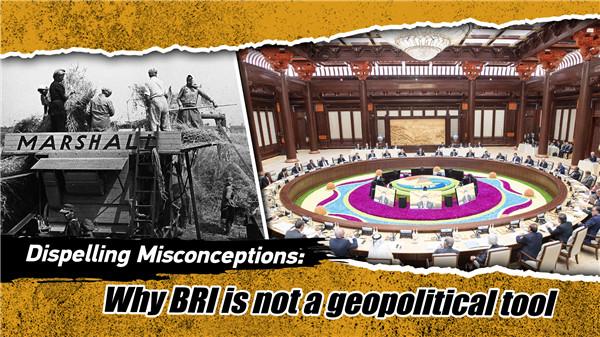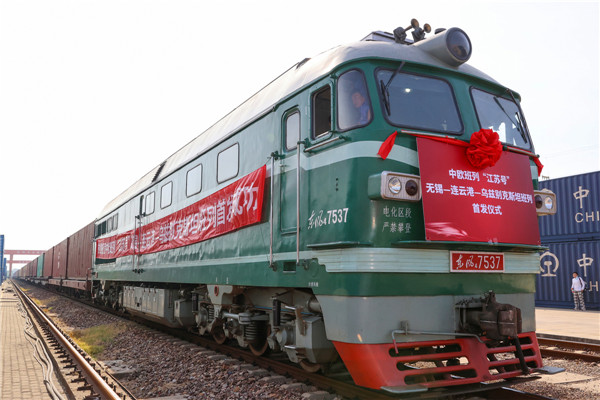Dispelling Misconceptions: Why BRI is not a geopolitical tool
October 16 , 2023Editor’s note: Since its proposal, some Westerners have never stopped discrediting the Belt and Road Initiative (BRI) in the past 10 years. Is the BRI predatory? Is it a geopolitical tool? Is the initiative a complete failure? Introduced at the BRI’s 10th anniversary, Dispelling Misconceptions on BRI is an eight-part series debunking Western lies on the initiative. The sixth essay refutes the allegation of the BRI as a geopolitical tool.
By Wang Huiyao | Founder of the Center for China and Globalization(CCG)
Since 2013, the Belt and Road Initiative (BRI) has evolved from a vision to a series of bilateral and multilateral arrangements, offering the potential to serve as a global public good platform. While it has been warmly embraced in ASEAN, Eastern Europe, Africa, and the Middle East, skepticism still lingers regarding the initiative, particularly from the Western bloc.
Some Western countries accuse the BRI of being a geopolitical tool and thus have actively proposed alternatives to the initiative in an attempt to contain the BRI’s growing international influence. For instance, Washington launched the Build Back Better World (B3W) during the G7 summit in 2021. The India-Middle East-Europe Economic Corridor (IMEC) was also announced on the sidelines of this year’s G20 leaders’ summit in New Delhi.
These endeavors demonstrate some Westerners’ continued perception of the BRI through a Cold War prejudice, seeing it as a modern-day version of the Marshall Plan. The facts have proved that the BRI is for the good of all. It is not a tool for geopolitical games. While participating countries had little say in the implementation of the Marshall Plan, openness is one of the hallmarks of the BRI.
With no bars set, countries do not need to negotiate their way into the initiative. Under the BRI framework, Chinese and foreign partners have launched 20-plus multilateral cooperation mechanisms in professional domains, attracting a growing number of participants. By June 2023, China had signed more than 200 BRI cooperation agreements with over 150 countries and 30 international organizations across five continents, according to the white paper “The Belt and Road Initiative: A Key Pillar of the Global Community of Shared Future” that China released on Tuesday.
A slew of countries and regions have dovetailed the BRI with their development strategies such as Kazakhstan’s Nurly Zhol (Bright Path), the Russia-led Eurasia Economic Union, the EU’s Juncker Investment Plan, and Australia’s Northern Development Strategy. Regardless of political systems, historical backgrounds, ideology, or development stages, countries from Africa, Eurasia, the Americas, and Oceania are all welcome to participate in the initiative. Instead of creating an exclusive club, the BRI embodies multi-win cooperation and a genuine pursuit of common development.
A China-Europe freight train leaves Wuxi in east China’s Jiangsu Province and heads for Uzbekistan, August 13, 2022. /Xinhua
Having proposed the BRI, China has no intention to challenge the current global order. It has been actively promoting cooperation, partnership, and sharing, rather than power politics. China welcomes so-called BRI alternatives and is anticipating cooperation with West-proposed initiatives as long as it is good for the community of a shared future.
But still, this cannot dispel Western distrust and even smearing against the BRI. Such skepticism stems from the disparity between China and the West in discourse power. It has to be admitted that Chinese media’s voice is much weaker than their Western counterparts in the global arena. This means the international community’s views on the BRI have been largely influenced, and even distorted, by some anti-China Western media.
To address this, more efforts can be devoted to boosting the BRI’s multilateralism. International and multilateral decision-making structures could be created, offering participating countries real responsibility over what is considered a Chinese initiative. The BRI could engage with international organizations under the United Nations system. The initiative could encourage the United Nations to establish a BRI cooperation mechanism, giving full play to the bridging role and global influence of the United Nations.
Outside view of the United Nations headquarters in New York, the United States. /Xinhua
Meanwhile, China could engage more developed countries in BRI third-party market cooperation and enhance its cooperation with the United States and Europe in infrastructure. Third-party market cooperation agreements emphasize complementarities, which include high-level production capacity from China, advanced technology from developed countries and the infrastructure needs of developing countries.
Additionally, China could cautiously consider joining the Paris Club. Development of the BRI involves massive lending programs and China could greatly relieve the international community’s doubts about the BRI if its lending practices followed internationally accepted rules. This could also help mitigate China’s external debt risks, safeguard global financial stability, and boost the international community’s confidence in China.
Also, expanding the Asian Infrastructure Investment Bank (AIIB)’s target sectors and regions would be a plausible way to support eligible infrastructure investment projects worldwide. China could probe the possibility of building an alliance to boost collaboration among various international development banks. This will bolster inter-banking coordination to improve and renovate traditional infrastructure in developing countries, build digital infrastructure, and enable green transitions toward a goal of carbon neutrality.
The BRI can mobilize business resources as well as think tanks worldwide to explore more intellectual resources. Establishing a multi-tiered and diversified think tank platform would help introduce dynamics to people-to-people communications. By organizing non-official international forums and summits, these alliances are expected to enrich the diversity of the BRI.
A multilateral BRI means China does not focus only on developing and underdeveloped countries, but also attracts advanced economies to participate in the initiative. The BRI has already proved to be a global public good, rather than a tool in geopolitical games, and, in the face of Western skepticism, efforts should continue to make it more multilateral.
From CGTN, 2023-10-16
Topical News See more









